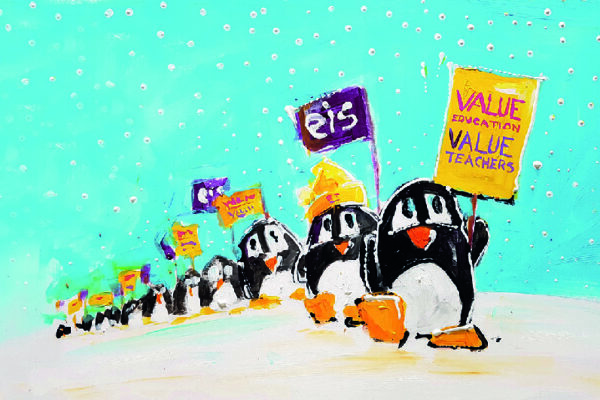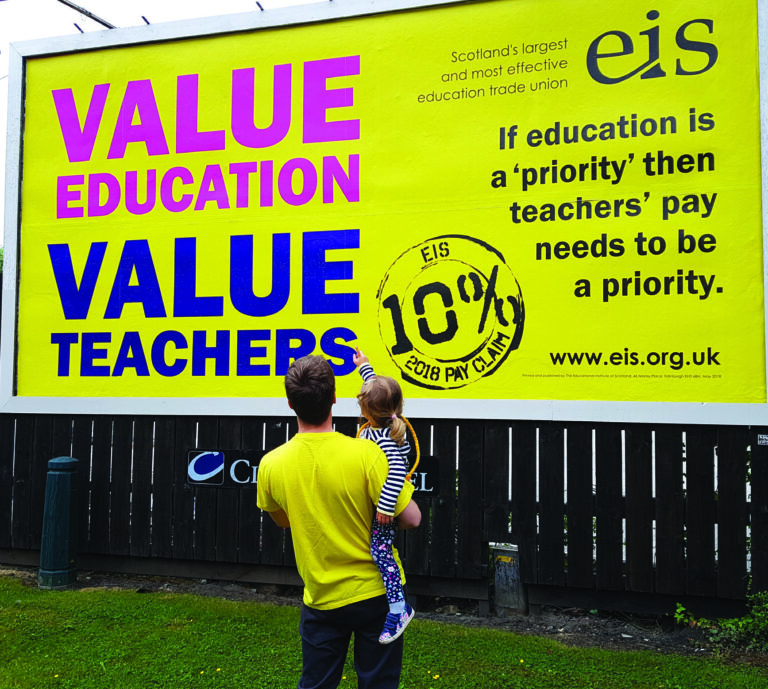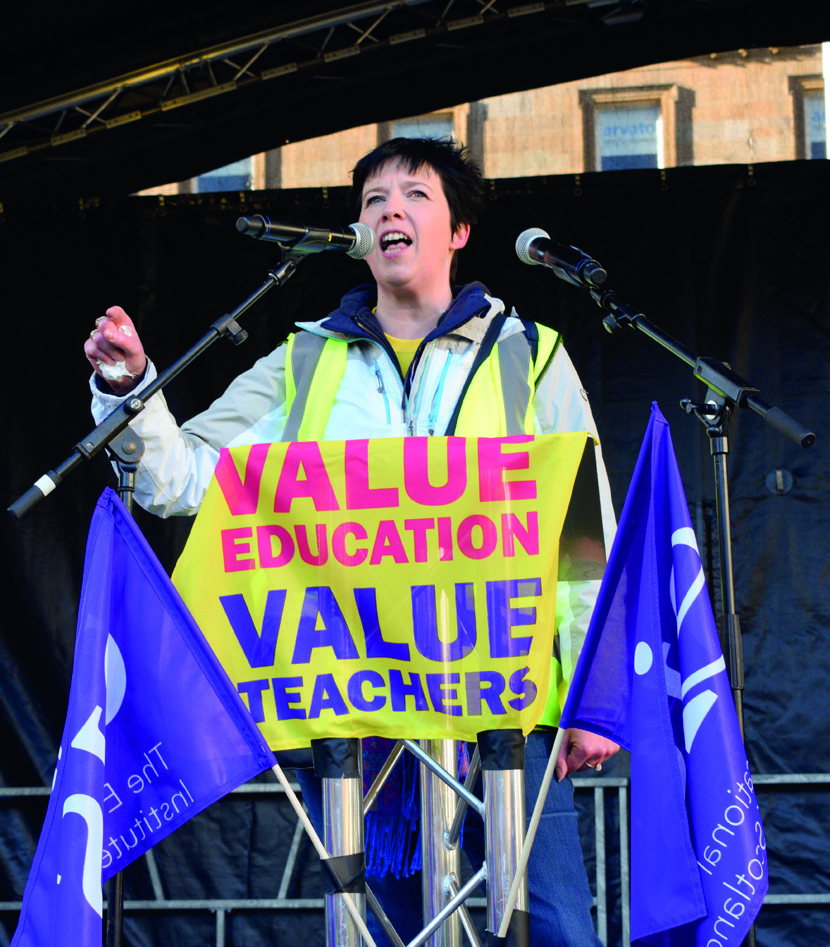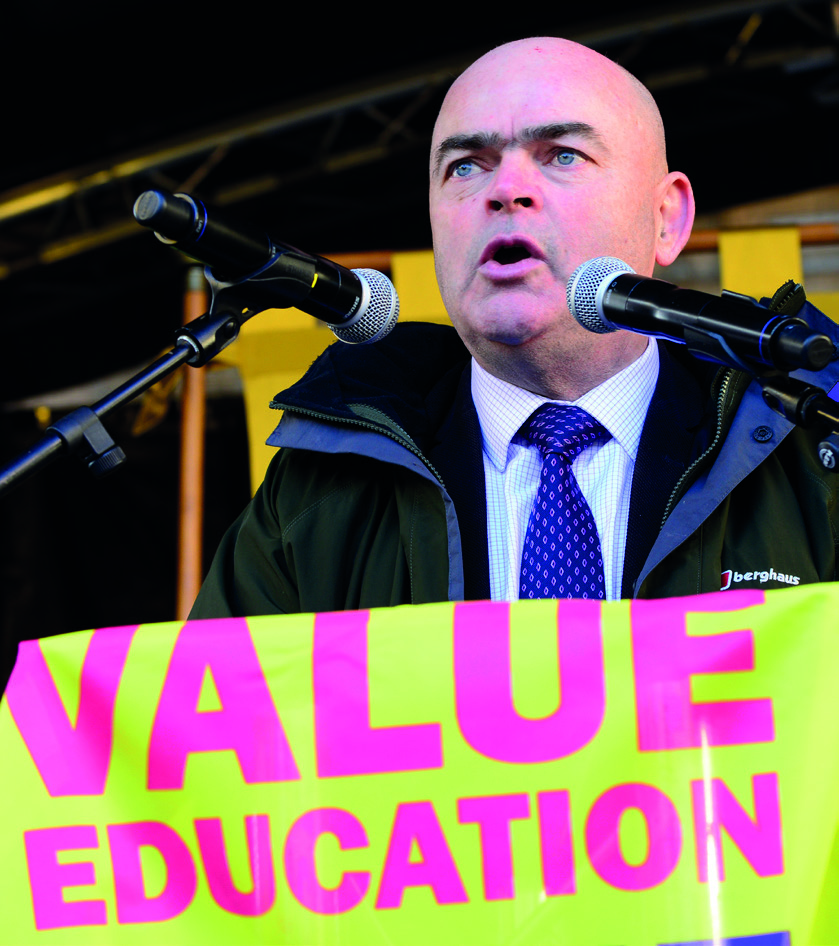But, of course, that was not the end of the matter. Instead, the cycle of improvement and decline began all over again. As the cost of living increased – and teachers’ pay didn’t – the EIS found itself once more forced to take dramatic action.
The 2018 Value Education Value Teachers campaign was launched on the back of a decade’s worth of austerity-driven pay erosion, leading to an AGM resolution that called for a 10 per cent pay award as the first part of restoring teacher pay to its previous value.
Significant barriers to successful industrial action had been created by the UK’s government’s anti-trade-unions laws. A strategy therefore had to be developed to engage a new generation of members – most of whom had little experience of trade-union activism – in the pay struggle.
By this stage Larry Flanagan was the EIS general secretary. Flanagan had began teaching in 1979; he was one of a cohort of left-leaning activists engaged by the union through its campaign against Thatcher’s intransigence in the pay dispute. A career-long union activist, Flanagan came to the general-secretary post straight from the classroom and constantly sought to base the union’s approach in the daily experience of practitioners. Without abandoning its commitment to providing gold-standard services to members, the Institute also adopted an organising approach, which essentially predicated itself on member engagement and activism. A new team of organisers was assembled and a huge focus thrown on to developing school-based reps and committees to take forward the campaign.
The strategic narrative that was developed was multi-pronged. First, the EIS needed to convince its new members of the merit of the 10 per cent pay claim. They then sought to nurture the grievance against COSLA and the Scottish government for failing to respond. Finally, they planned to move into industrial action to press home for success.
Anti-trade-union laws introduced by the Conservative government meant that, in order to take industrial action legally, the Institute had to ensure that at least 50 per cent of eligible members voted in a statutory ballot. In addition, because any action would involve schools, a second barrier applied: at least 40 per cent of those entitled to vote had to vote in favour. This effectively meant that a non-vote or abstention counted as a vote against striking.
Rather than being intimidated into inaction by such profoundly undemocratic measures, the Institute set about ensuring that when required, EIS members would be strike-ready and that no-one would be in any doubt about their willingness to take the action required.
A major highlight of the campaign – which vindicated this approach – was a huge demonstration in Glasgow, held in October 2018. “We kind of took over the city,” says one activist. “It was a sunny day in October – quite chilly, but still sunny. Yellow was the colour of the campaign, so there were people with yellow T-shirts and yellow hats. On the underground as well: it was just a sea of yellow.”
Over 30,000 people gathered for the march; it took two hours for the people bringing up the rear to begin moving through the streets, by which time the front of the demo had already reached George Square for the rally. For most, it was the biggest EIS march they had ever been on; for many it was the first.
Of significant note was the number of young teachers who were there, particularly young women – a new and energetic demographic.
“That was the day I knew we would win the campaign,” says Larry Flanagan. “We had to go to the brink of strike action to conclude a deal, but that was the day the campaign turned. It also marked a massive renewal in member engagement, creating a new wave of activists.”
The result of the campaign was a 13.5 per cent pay increase for teachers.
The even bigger victory was the trade-union renewal brought about by the campaign activism, the bedrock for the post-Covid cost-of-living campaign now being built and fought in our 175th year.

Penguin Christmas cards; one was gratefully received by the Deputy First Minister!



ACKNOWLEDGEMENTS:
Research, interviews and substantive writing:
Adi Bloom
Design and lay-out:
Stuart Cunningham and Paul Benzie
Additional writing and research:
EIS Comms Team and assorted staff members
Printed by:
Ivanhoe Caledonian, Seafield Edinburgh
Photography:
Graham Edwards, Mark Jackson, Elaine Livingston, Toby Long, Ian Marshall, Alan McCredie, Alan Richardson, Graham Riddell, Lenny Smith, Johnstone Syer, Alan Wylie


Thanks to the many former activists and officers who gave of their time to be interviewed and taken a stroll down memory lane. And of course a very special thanks to the EIS members who created this history through their activism and commitment to the cause of Scottish Education.
© 2022 The Educational Institute of Scotland